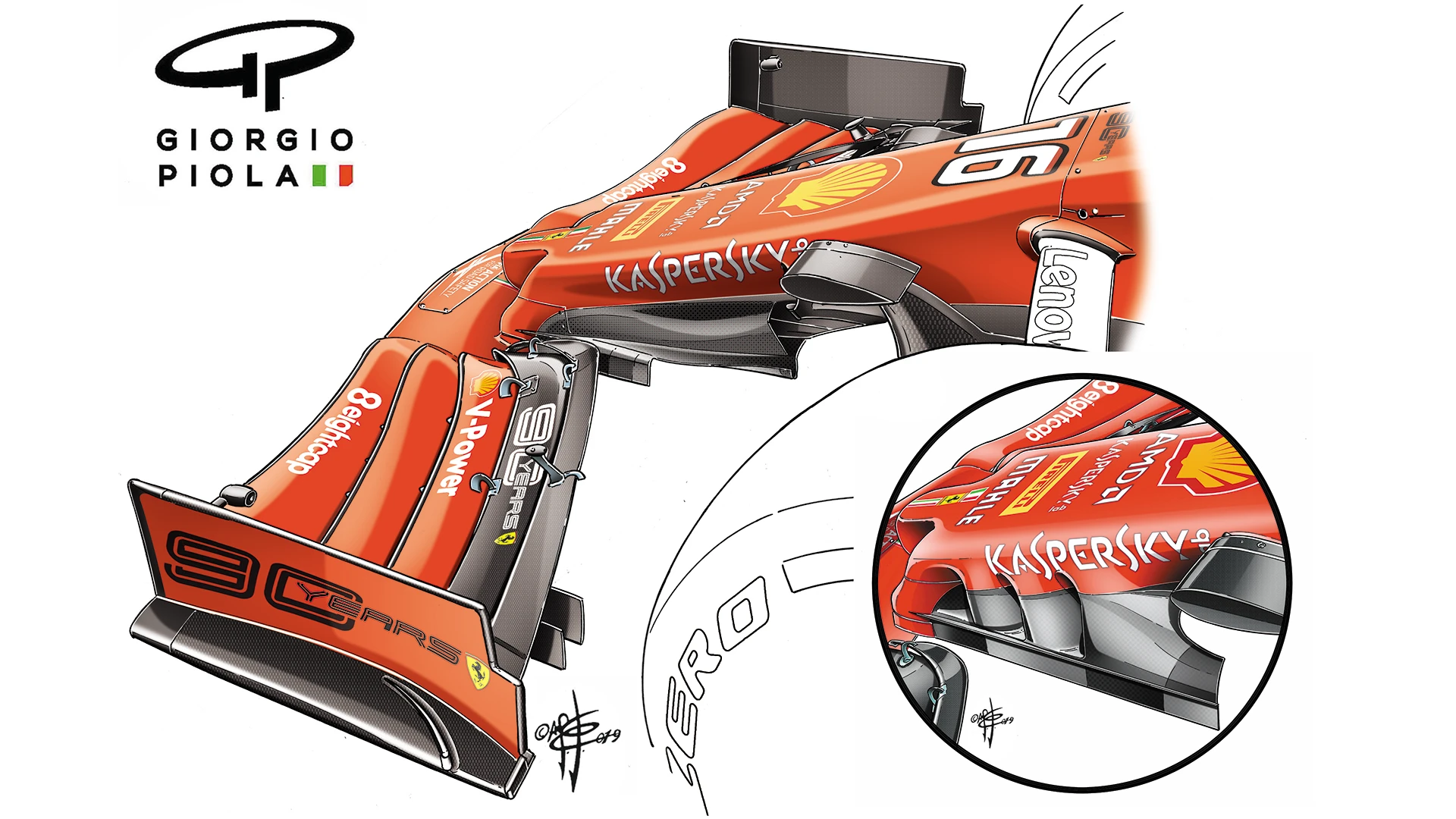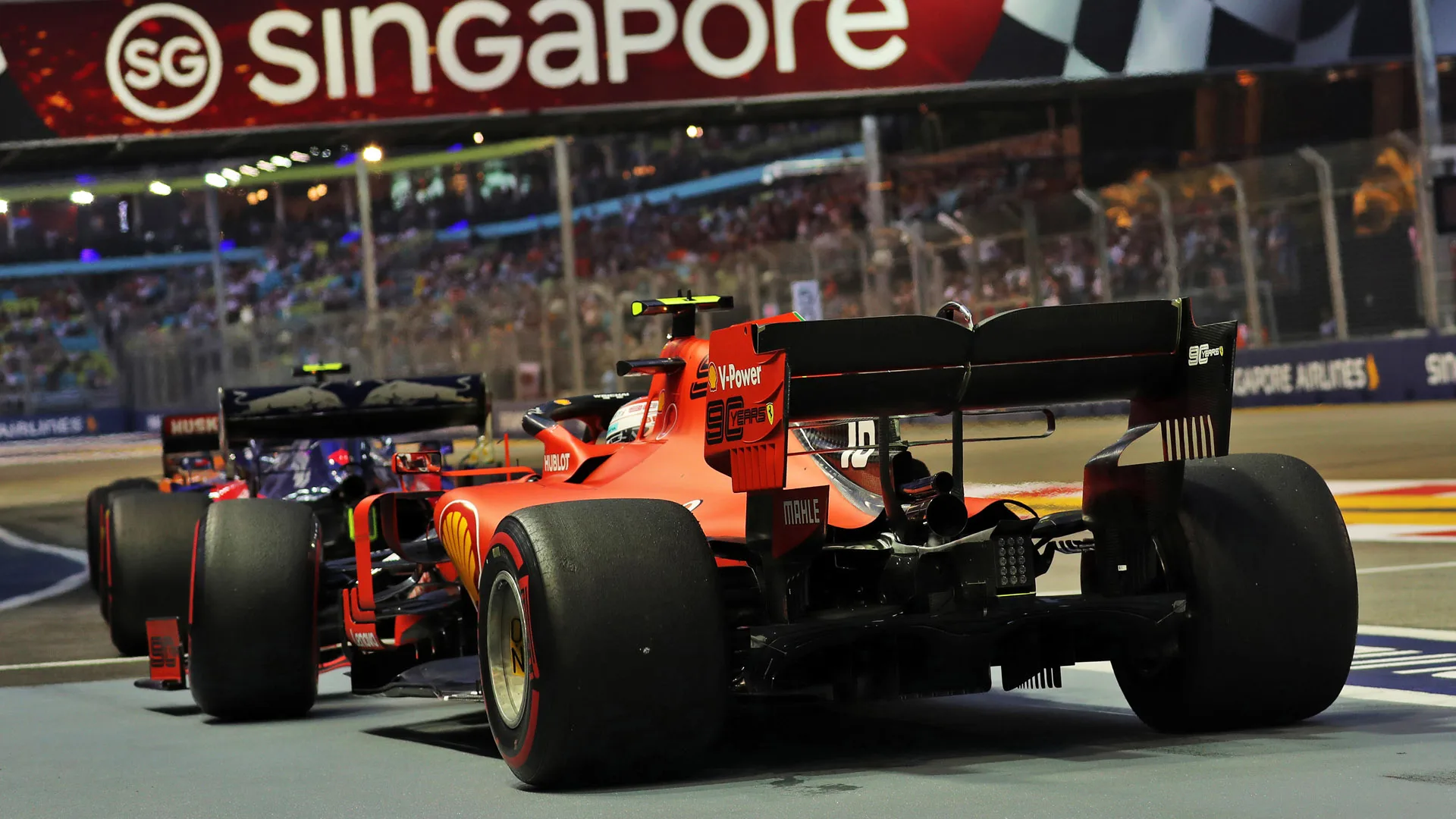Ferrari’s spectacular Singapore success - around a track they hadn’t believed would be ideal for their car – was born of two key factors…
1) The team’s aerodynamic upgrade
The most visible aspect of Ferrari’s aero upgrade was the new nose arrangement (seen in the video above), but it was one harmonious package that also included changes to the floor, diffuser and rear wing. The overall aim was to bring the centre of aerodynamic pressure forwards, to help give the car the front end load it has been lacking all season.
Previously, because of the front end limitation, Ferrari have not always been able to use as much rear wing as their rivals in order to give the car a drivable handling balance. On maximum downforce tracks, this has limited the Ferrari’s potential compared to Mercedes and Red Bull. Singapore is generally considered a maximum downforce track.
READ MORE: Vettel dedicates victory to fans after 'difficult' few weeks
The SF90’s new nose section featured a small version of the fashionable ‘cape’ beneath the nose, at the back, where it transitions towards the barge boards (see drawing below). This replaced the previous arrangement (inset in the drawing) which featured angled slots designed to keep the underfloor supplied with a strong airflow even as the car (and therefore the airflow) changed direction.

The cape now begins in the ‘nostrils’ either side of the nose tip. Its upward angle as the airflow enters here means the air travelling beneath the cape’s leading edge has to travel further than that above. This manipulation of the air pressure creates some direct front downforce from beneath the nose. But what the cape’s contours also do is channel the airflow faster to the underfloor - and the faster it flows the more downforce is created.
The previous vertical slots, while helping keep the airflow consistent as the car turns, would also have compromised the peak speed of the flow to the underfloor. With the underfloor now being fed with a more powerful flow and the nose generating more downforce directly on the front, less help is needed in keeping an adequate airflow supplied to the underfloor in that transient state at the beginning of a corner.

Because the underfloor was now being fed with a more powerful airflow, changes to the diffuser were made to maximise that. The slots in the outer edges were reprofiled. These slots turn the airflow coming through the diffuser and align it with the airflow coming through the gap between the body and rear wheel. That particular outer-body airflow has been channeled down the body sides as fast as possible and the extra vanes on the sides of the floor are vortex generators that accelerate that flow.
2) Set-up difficulties at Mercedes and Red Bull
The effect of Ferrari’s set-up changes at Singapore was an SF90 with the front end grip it had previously been lacking. This and the car’s ability to ride the kerbs was key in it being better suited to the bumpy street circuit than either Mercedes or Red Bull.
The chosen Mercedes set-up did not work the front tyres hard enough, requiring the out-laps to be particularly fast – which inevitably meant they encountered traffic on that out-lap, compromising front tyre temperatures into the beginning of the timed lap. This would invariably have made life more difficult after the Safety Car re-starts too.
READ MORE: Ferrari hungrier than us, says Hamilton as he urges Mercedes to ‘step it up'
At Red Bull, the chosen set-up did not work at all well over the bumps and kerbs, preventing the car’s usual strong downforce from being fully exploited. This was evident from FP1, when I watched trackside at Turn 5 and could clearly see that the RB15’s front damping looked less than ideal.
It will be fascinating to see how Ferrari’s progress affects the pecking order at each of the remaining six tracks.
Next Up
Related Articles
 Verstappen on what he would never do as an F1 team boss
Verstappen on what he would never do as an F1 team boss Audi run 2026 car on track for the first time
Audi run 2026 car on track for the first time Norris ‘would love’ to battle with Hamilton in 2026
Norris ‘would love’ to battle with Hamilton in 2026.webp) ExclusiveZhou on why he has ‘high trust’ in Cadillac project
ExclusiveZhou on why he has ‘high trust’ in Cadillac project Hamilton’s best helmets through the years
Hamilton’s best helmets through the years/TWGMS-F1-Announcement-1298%20(1)%20(1).webp) ExplainedEverything you need to know about Cadillac’s entry to F1
ExplainedEverything you need to know about Cadillac’s entry to F1
